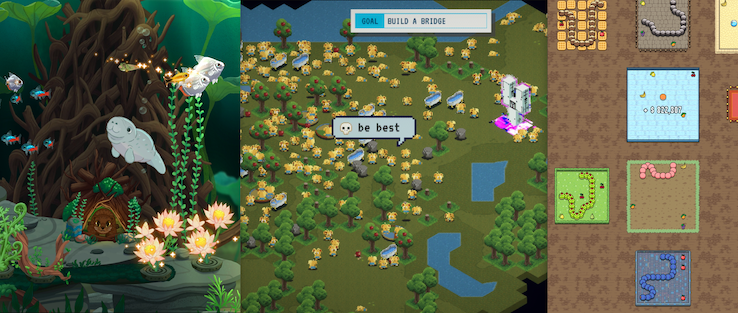
3 fun creature-y Android games: 🏞️ Pondlife, 👾 Thronglets, 🪱 I got Worms
Despite very different play styles and aesthetics, all 3 games in this post are incremental-y! They also all involve indirectly influencing communities of creatures, a bizarre coincidence…
#1: Pondlife
This is not a challenging game. It’s not even a particularly engaging or complex game. However, it is a lovely way to spend a relaxing minute or two every half hour or so by looking at swimming fish, and sometimes that’s all you want!
Screenshots
All screenshots are from version 1.3.12:
| Gameplay | Fish list | Fish detail |
|---|---|---|
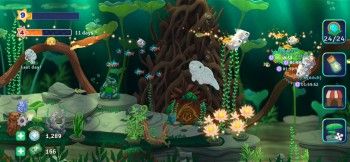 |
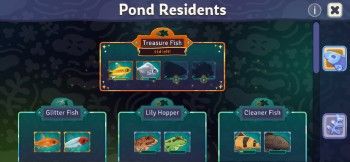 |
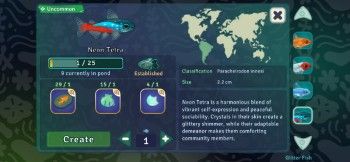 |
Review
Pondlife is, unsurprisingly, about building a pond. You’ll spend your time creating fish and other pond creatures to grow, feeding them every now and again, then eventually releasing them into the wild and getting new creatures.
These creatures are organised into categories (so far I have “Glitter Fish”, “Lily Hopper”, and “Cleaner Fish”), each requiring their own type of food. This food is typically purchased with bubbles, the main game currency, which can be acquired over time from plants and decorations.
This creature creation, feeding, and releasing forms the main gameplay loop. It all happens at a very relaxed pace, with intervals of 30+ minutes between feeding sessions for larger fish being common. Smaller fish, like the starter few fishes, will only take a minute or so, enabling a more active form of gameplay.
Progression comes in the form of XP and levels, with new levels unlocking new areas of the pond. Almost every action rewards XP, and the first few are pretty speedy.
On this topic, the game does a good job of letting you choose your own play style. If you intend to play actively, then selecting fast maturing plants and fast-growing fish will reward more engagement. If however you’re more like me and only want to interact with your pond occasionally, slower growing but higher yield choices will make more sense.
Something I really appreciated about Pondlife is there’s no incentive for keeping the game open. For example, if you carefully plan your pond so everything takes about half hour, there’s no benefit whatsoever to keeping the app open all that time. Instead, you can close it, come back at the right time, and everything will be ready for you! There’s also no prestige mechanic, or income multipliers, just slowly making your pond better. It’s worth mentioning the app does however require an internet connection to play.
Whilst it is ultimately a fairly simple game, there are a few extras that make it engaging. For example, there’s a quest system providing objectives ranging from releasing enough of a certain fish to nudging different fish into each other (via slowly dragging your finger to guide them). These quests help provide a hint on the next thing to do, but are fairly optional with helpful but not essential rewards.
Releasing enough of a specific creature will unlock the next creature in the category, as well as providing more information about the size, location, and Latin name. I really like how releasing enough of an animal to progress up through the 3 categories is framed as helping to repopulate, progressing from “Discovered”, to “Established”, and finally “Thriving”. Removing fish by “releasing” them into the wild is much, much more wholesome than “selling” or “removing”.
Similarly, there’s some really nice touches by the developers, showing there’s some extra effort put in. If you have multiple of the same fish, they will form groups and swim together, whilst frogs will sometimes hop up on the logs poking out of your pond. These effects are entirely aesthetic, but add more life to the pond.
Finally, there also seems to be regular seasonal events. My time with the game overlapped with a 2 week “Treasure Fish” event, essentially a whole new category of fish with their own food that grow in your pond. Nurturing and releasing enough of these fish provide main game rewards, and I actually engaged with the event more than the main game due to the pretty fish!
Monetisation
There’s the usual mixture of monetisation methods, with various packs, XP boosters, and aquacash (premium currency) packs, alongside incentivised adverts.
Luckily these aren’t too aggressive, or mandatory. I purchased one of the cheaper starter packs early on to support the developer, and it provided a jumpstart to reduce my feeding costs, but a couple of days later the benefit was essentially nullified. Similarly, the adverts aren’t particularly rewarding, typically giving a low level reward or skipping a single fish’s timer.
Tips
- Aquacash should probably only be used to upgrade your feeding station, since that can’t be upgraded any other way and provides constant benefits.
- Following quests is a good way to get extra XP and unlock new areas, so keep an eye on them.
- You can feed animals just by putting food roughly nearby, so don’t worry too much about placing the food directly on then.
- Make sure your pond is always full, and fully grown creatures are released quickly, so you’re not wasting capacity.
- Merging decorations to make the rarer ones more powerful is useful, letting you quickly collect large amounts of bubbles.
- Getting a creature to the next “level” typically rewards well, so it’s worth picking creatures carefully.
- Having a balance of animals that eat expensive (e.g. Cleaner Fish, ~100 bubbles) and cheap (e.g. Glitter Fish, ~10 bubbles) food is essential, or you’ll run out of bubbles and be unable to feed them!
#2: Thronglets
Thronglets is closely based on the episode “Plaything” from the latest Black Mirror series, and I’d highly recommend watching that first to avoid spoilers! It is also related indirectly to “Bandersnatch”, the playable Netflix show from 2018.
Screenshots
All screenshots are from version 1.1.113:
| Early game | Mid game | Late game | Post-credits |
|---|---|---|---|
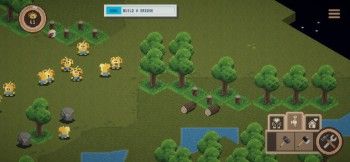 |
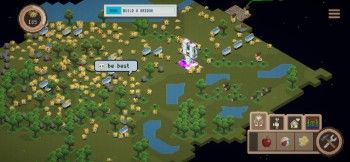 |
 |
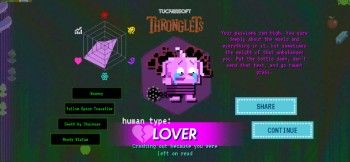 |
Review
This is a strange merge of story, incremental, and a 4X strategy game. You passively control the environment of your Thronglet community, and it grows over time. You assist in this by meeting their needs, exploiting natural resources, and making decisions about their future.
What starts off as a very basic Tamagotchi-style clearing in a wood rapidly escalates into a startlingly complex society, with your arbitrary building placements forming busy areas, pathways between sections, and determining their overall happiness. Your job is to manage the society’s resources (e.g. ores, Thronglets, wood), although it’s impossible to fail as growth is inevitable. I’ll intentionally be a little vague, because some of the game’s “surprises” really need to be played first-hand.
Unlike similar games, you will have a lot of conversations with your Thronglets. This may be as basic as choosing how they progress, or as complex as their view on the world. For example, early on it is revealed you can build bridges from the bones of dead Thronglets, or continue using the far less efficient wood. I chose to keep using wood, and this impacted both the speed of the society’s growth, and how they interpret the world.
Later on the decisions become surprisingly thoughtful and deep, with discussions of love, power, morality, and existential dread. I was absolutely not expecting this from a TV tie-in game, and the conversations were genuinely interesting and insightful. I’ve avoided any screenshots of these to avoid spoilers.
It’s a relatively short experience, perhaps 2 hours, but kept me engrossed throughout the single play session. Whilst it is possible to play again, and I suspect there’ll be differences based on my play-style, the element of surprise will be lost. A “glitch” aesthetic persists throughout, with occasional clips from the TV show and programming-y dialog boxes appearing to communicate the Thronglets’ continual learning process.
Overall this is an absolutely excellent short but sweet story-driven incremental game, and I highly recommend it to anyone with a Netflix subscription!
Monetisation
None, it’s free if you have Netflix.
Tips
- Thronglets won’t entirely feed / clean / entertain themselves even if you have the relevant self-serve item (e.g. apple tree), so occasionally throwing a bunch of apples / balls into a crowded area can help keep them alive.
- They will get trapped easily if you don’t place items carefully, so clear out spaces wherever possible.
- They will inform you of their needs (like Sims), it’s far easier just responding to these instead of proactively checking their status.
- Pollution can get out of control quickly, hunt it down and stop it ASAP.
- As with any 4X game, saving up for an exponential improvement (e.g. Ore Refinery II) is extremely important, and you’ll need to ignore some short-term goals for this. Otherwise, your building costs (e.g. houses) will rise unsustainably.
- You can’t lose, so it’s fine to play however you want.
#3: I got Worms
I found this simple Snake-based incremental via r/incremental_games, and given it was last updated 8 years ago I’m surprised it still runs OK!
Screenshots
All screenshots are from version 1.015:
| Gameplay | Manual control | Upgrades |
|---|---|---|
 |
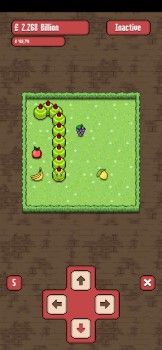 |
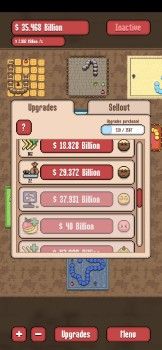 |
Review
You know Snake, the game where your snake eats items and gets bigger until you run out of space? Well, this incremental game is entirely based on that!
You’ll unlock automation early on, and realistically won’t be playing Snake at all after the first few minutes, but it’s a nice simple framing for a “numbers go up” game. Each Snake board earns you passive income, and you can purchase upgrades to each board.
Progression is very straightforward and slow, with little incentive to actually open the game for more than a few seconds every 10-15 minutes. When you do, you’ll have a couple of upgrades to pick from, then you’re done again. Eventually there’s a prestige mechanic, but it’s a slow grind there, and it mostly increases the number multipliers (and a few minor perks).
After a few days of checking in every couple of hours I have ~200 of the 1,567 upgrades, although presumably these will slow down massively later on. I’ll probably keep going until I hit some sort of wall, since there’s doesn’t seem to be any limit to offline gains!
Monetisation
None!
Tips
- I prefer buying the upgrades from cheapest to more expensive, prioritising AI whenever available.
- Check your most profitable worms in the Statistics menu, typically it’ll be your 2-3 latest ones, and focus on upgrading them.